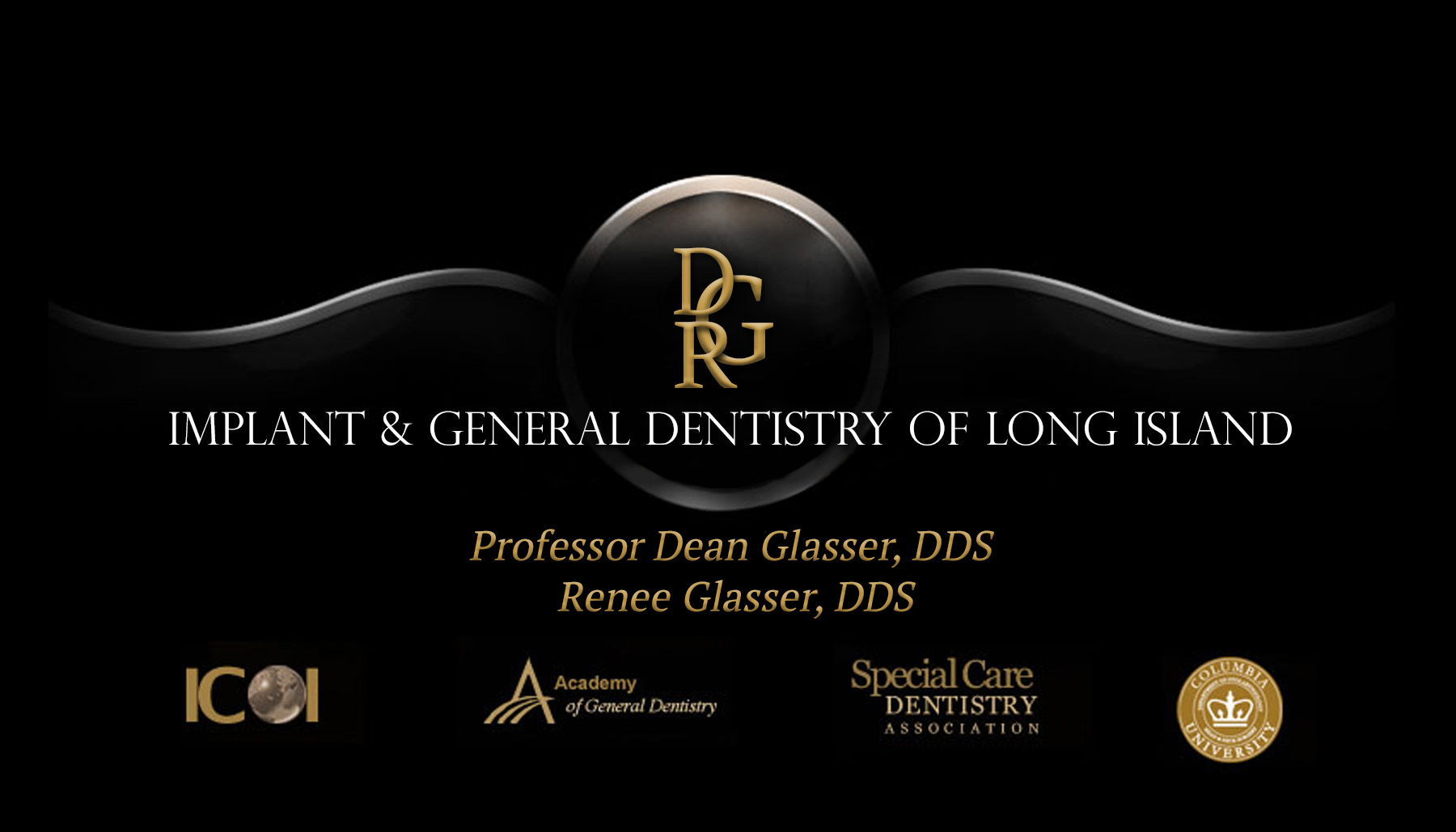Tooth-Colored Fillings in Melville, NY
Tooth-Colored Cosmetic Fillings in Melville, and Long Island NY
The talented Dr. Dean Glasser can replace outdated gold and silver teeth with natural-looking materials to give you back your beautiful smile. At our Melville office, our team can review your case and help you create a treatment plan that suits your needs. Call (631) 423-6767 today to schedule your consultation!
What are Tooth-Colored Fillings?
In the 1970s, "white fillings" came into common use. These "tooth-colored fillings" were made of a plastic dental resin filled with microscopic filler particles and were called composites. When dental composites were first introduced, they could only be used in the front teeth, because they weren't strong enough to withstand the chewing pressure of the back teeth.
Today, these fillings are colored to match your teeth and are practically invisible to the untrained eye. Tooth-colored fillings can be used for aesthetic and/or medical purposes. These tooth-colored fillings can replace old and worn dental amalgam, gold, or other metal fillings.
What are Tooth-Colored Fillings made of?
Tooth-colored fillings, also known as composite, are a combination of multiple ceramic-type materials of various sizes, shapes, and properties (like quartz and silica, to name a few) added to a liquid-type resin. These materials are more resilient and longer lasting. Dr. Glasser is proud to offer tooth-colored fillings to our patients and encourages patients to take advantage of their natural appearance.
Tooth-colored fillings are bonded directly to the affected tooth to restore small areas of decay or to replace current fillings. They are placed in the same way as traditional metal fillings but may take a little longer to perform. The tooth must be kept dry and free of saliva. After the decay is removed, Dr. Glasser applies an adhesive to the tooth along with the white composite filling, which is then hardened into place with a special light.
What is Bonding?
Bonding is a chemical process by which dental restorations can be micro-mechanically attached to teeth. It often involves multiple steps to create an adhesive bond but not necessarily a true chemical bond. This is an important technique because it allows dentists the ability to be conservative in their treatment of tooth decay. In the past, cavities were treated with amalgam, also known as silver fillings. In the case of silver fillings, a greater amount of tooth structure is removed in order to create retentive features for the restorations to hold onto.
benefits of tooth-colored fillings
- Esthetics - Tooth-colored fillings/composite can closely match the appearance of your natural teeth and can therefore restore your tooth almost exactly back to its original state. The high esthetic results created by this material are a major reason most people prefer tooth-colored fillings over the ‘older style’ silver fillings/amalgam.
- Structural reinforcement of the tooth - The physics and the process of bonding a tooth-colored filling/composite to a natural tooth is what allows for its structural reinforcement. The composite material behaves and functions in a similar way as natural teeth. As these restorations expand and contract with a similar modulus to that of natural tooth structure, they can strengthen the tooth by holding it together. As a result of these properties, we are less likely to see tooth fractures.
- Thermal insulation, reduction of hot and cold sensitivity - The ceramic-type composition of tooth-colored fillings is intrinsically less thermally conductive than the metal silver fillings. As these tooth-colored fillings prevent your tooth from reaching these extremes of hot and cold temperatures, we are less likely to see sensitivity and resulting toothaches.
- Preservation of tooth structure - As a result of the micro-mechanical bonding process, the need for extensive tooth reduction is a thing of the past. We can be much more conservative and maintain the integrity of the natural tooth as these restorations have their intrinsic strength.
Are tooth-colored fillings safer than silver fillings?
The controversy of amalgam fillings is something that I have lectured on many times. The controversy is based on questionable findings that believed that the mercury present in these silver fillings can cause diseases such as multiple sclerosis and dementia or even have effects on pregnant patients. However, current and more up-to-date research has proven that silver fillings and their associated mercury do not pose a health risk.
HOW LONG WILL TOOTH-COLORED FILLINGS LAST?
Tooth-colored fillings are designed to last up to 10 to 12 years before needing replacements. Unlike other fillings, tooth-colored fillings aren’t made up of metal but rather a composite that matches your tooth’s color. Despite not being metallic, these fillings still hold strong to chewing and biting and are extremely durable when properly taken care of. Patients can enjoy their newly-filled smiles for up to a decade as long as no chipping or breakage occurs.
CAN YOU EAT AFTER HAVING TOOTH-COLORED FILLINGS?
Yes. You may eat after your toot-colored filling appointment, but it’s important to avoid certain foods that may cause damage, such as:
- Chewy candies, gum, or caramel
- Chewy meats such as steak or jerky
- Raw, hard fruits like carrots or apples
- Hard candies
HOW LONG WILL THE TOOTH-COLORED FILLING PROCEDURE TAKE?
Most tooth-colored filling procedures take about 20 minutes to one hour to complete. However, if you are having more than one tooth filled, this time may vary. You can plan to be at the office for an average of less than two hours.
WHAT SHOULD I AVOID AFTER MY APPOINTMENT?
After your teeth are filled, it’s important to keep in mind that oral aftercare can affect how long your fillings will last. Although designed to last for a decade, improper care and eating the wrong foods can cause damage to your fillings.
While you can eat after your procedure, avoid damaging foods like raw veggies or fruits and chewy meats. It’s also important to avoid extremely hot or cold acidic and sugary drinks such as coffee or soda for up to at least two weeks after your treatment. These drinks can cause your fillings to become damaged and detach from your tooth.
Grinding your teeth at night can also cause damage to your fillings. If this is a recurring habit for you, consider investing in a nighttime mouth guard to help protect your fillings as well as your jaw.
Read what our patients are saying
Dr. Glasser is very professional and knowledgeable he has performed root canals implants, etc. This is the best office I have ever gone to. Going to Dr. Glasser since 1991.
Click here to read more reviews.
Cost Of Composite Fillings
We feel strongly that we never want you to decide your course of treatment based on cost. With this in mind, we have aligned the prices of both tooth-colored fillings and silver fillings to be the same cost. By eliminating the cost as a deciding factor, you can choose the restoration that not only is most appropriate for your treatment but also best fits your needs.


